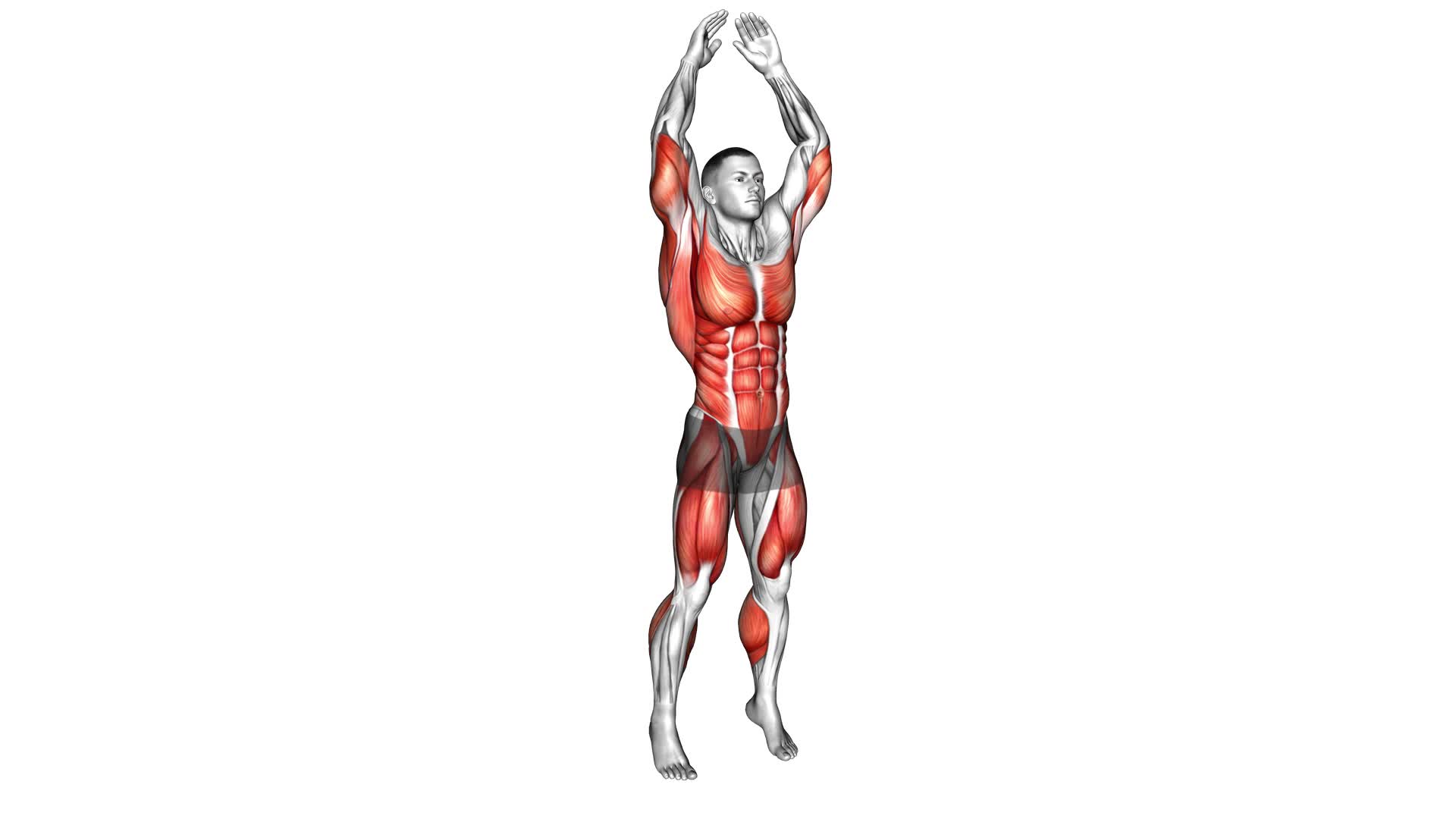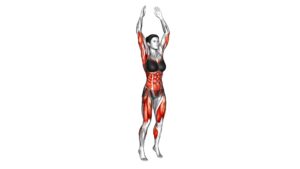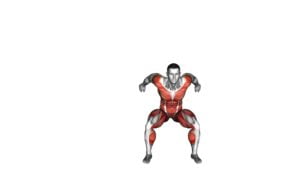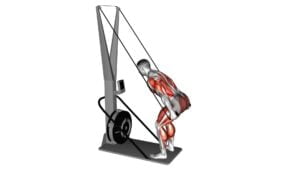Ski Runners (male) – Video Exercise Guide & Tips

Looking to improve your skiing skills? Our video exercise guide and tips for ski runners (male) will help you get in top shape on the slopes.
Watch This Exercise Video
With essential warm-up exercises, strengthening exercises, agility and balance exercises, and plyometric exercises, you'll develop the power and control you need for an amazing skiing experience.
Plus, we'll share injury prevention tips to keep you safe.
Get ready to conquer the mountain with our comprehensive guide!
Key Takeaways
- Ski Runners exercises provide a full-body workout in a short amount of time.
- Incorporating warm-up exercises decreases the risk of injury.
- Proper form techniques are crucial for injury prevention.
- Incorporating strengthening exercises reduces the risk of injuries.
Benefits of Ski Runners (male) Exercises
Discover the numerous benefits of Ski Runners (male) exercises for improving your overall fitness and athletic performance.
Ski Runners exercises aren't only great for building strength and endurance, but they also provide several injury prevention techniques that can help you stay in top shape and avoid common sports-related injuries.
One of the key benefits of Ski Runners exercises is that they target multiple muscle groups simultaneously. This means that you can get a full-body workout in a short amount of time. By engaging your core, glutes, quads, and hamstrings, Ski Runners exercises help to improve your overall strength and stability, which is essential for maintaining good athletic performance.
In addition to building strength, Ski Runners exercises also improve your cardiovascular fitness. The constant movement and intensity of these exercises help to increase your heart rate and improve your endurance. This can be especially beneficial for athletes who participate in sports that require a high level of cardiovascular fitness, such as skiing, running, or soccer.
Furthermore, Ski Runners exercises help to improve your balance and coordination. The movements involved in these exercises require you to maintain control and stability, which can translate to better performance in sports that require agility and quick movements.
Essential Warm-up Exercises for Skiers
To properly prepare for your skiing session, it's important to regularly incorporate essential warm-up exercises into your routine. These warm-up routines will help to increase blood flow, improve flexibility, and reduce the risk of injury.
Here are four stretching exercises that you should include in your warm-up:
- Leg Swings: Stand next to a wall or pole and swing one leg forward and backward, keeping it straight. Do this for 10 swings on each leg to warm up your hip flexors and hamstrings.
- Arm Circles: Extend your arms out to the sides and make circles with your hands. Start with small circles and gradually increase the size. Do 10 circles forward and then 10 circles backward to warm up your shoulders and upper body.
- Standing Quad Stretch: Stand tall and grab your ankle, pulling it towards your glutes. Hold this stretch for 15-20 seconds on each leg to warm up your quadriceps.
- Standing Side Stretch: Stand with your feet hip-width apart and interlace your fingers above your head. Lean to one side, stretching your ribs and obliques. Hold for 15-20 seconds on each side to warm up your core.
By incorporating these warm-up exercises into your routine, you'll be physically prepared for your skiing session and decrease the risk of injury. Remember to listen to your body and modify the exercises if needed.
Stay safe and have fun on the slopes!
Strengthening Exercises for Ski Runners (male)
To effectively strengthen your muscles as a ski runner, it's important to focus on targeted muscle groups, maintain proper form techniques, and implement injury prevention strategies.
By targeting specific muscles such as the quadriceps, hamstrings, glutes, and core, you can enhance your overall strength and endurance on the slopes.
Additionally, practicing proper form techniques, such as maintaining a stable and balanced stance, will help optimize your performance and minimize the risk of injury.
Lastly, incorporating injury prevention strategies, such as stretching before and after workouts and using appropriate equipment, will further protect your body and ensure a successful skiing experience.
Targeted Muscle Groups
To effectively strengthen your muscles as a male ski runner, incorporate these five targeted exercises into your routine:
- Squat Jumps: This exercise targets your quadriceps, hamstrings, and glutes, helping you build explosive power and improve your jumping ability on the slopes.
- Lunges: Lunges focus on your quadriceps, hamstrings, and glutes, enhancing your stability and strength while skiing downhill.
- Single-Leg Deadlifts: By working your glutes, hamstrings, and lower back, single-leg deadlifts improve your balance and stability, reducing the risk of injury while skiing.
- Core Exercises: Strengthening your core muscles, such as your abs and lower back, improves your overall stability and control on the slopes.
Remember, the benefits of targeted exercises include increased strength, improved endurance, and enhanced performance. However, it's crucial to maintain proper form techniques to prevent injuries. Pay attention to your posture and engage your core throughout each exercise.
Incorporate these exercises into your training regimen and enjoy the benefits they bring to your skiing.
Proper Form Techniques
To ensure proper form and maximize the effectiveness of the strengthening exercises for male ski runners, it's important to focus on maintaining correct posture and engaging the core throughout each movement. Proper form techniques play a crucial role in preventing injuries and optimizing performance on the slopes.
When performing exercises such as squats, lunges, and leg presses, make sure to keep your back straight, shoulders back, and chest lifted. This will help to align your spine and distribute the load evenly. Additionally, engage your core by pulling your belly button towards your spine, which will provide stability and support to your lower back.
By maintaining proper form and engaging your core, you won't only enhance the effectiveness of the exercises but also reduce the risk of injuries.
Now, let's move on to discuss injury prevention strategies.
Injury Prevention Strategies
Maximize your protection against injuries by incorporating targeted strengthening exercises into your ski running routine. Injury prevention strategies are crucial for enhancing ski technique and ensuring a safe and enjoyable experience on the slopes. Here are four key exercises to help you stay injury-free:
- Squats: Strengthen your quadriceps, hamstrings, and glutes to improve stability and control while skiing. Aim for a deep squat, keeping your knees aligned with your toes.
- Lunges: Engage your leg muscles and improve balance with forward and lateral lunges. Make sure to keep your front knee directly above your ankle and maintain an upright posture.
- Single-leg balance: Enhance stability and proprioception by standing on one leg for 30 seconds at a time. Challenge yourself by closing your eyes or performing small knee bends.
- Core exercises: Strengthen your abdominal and back muscles with planks, Russian twists, and supermans. A strong core will help you maintain balance and protect your spine.
Incorporating these strengthening exercises into your ski running routine won't only enhance your performance but also reduce the risk of injuries. Stay safe and have a great time on the slopes!
Agility and Balance Exercises for Skiing
To become a better skier, it's crucial to focus on agility and balance exercises. These exercises will help you develop core strength, which is essential for maintaining stability and control while skiing.
Core Strength Importance
Developing core strength is crucial for improving agility and balance while skiing. Strengthening your core muscles not only enhances your performance on the slopes but also helps prevent injuries. Here are four core strength benefits and injury prevention strategies to consider:
- Enhanced stability: A strong core provides a stable base, allowing you to maintain control and balance while navigating challenging terrain.
- Improved agility: Core strength enables quicker and more precise movements, allowing you to adapt to changing conditions and make dynamic turns with ease.
- Reduced risk of back injuries: A strong core supports your spine and helps prevent strain or injury to your lower back, a common skiing ailment.
- Increased endurance: Building core strength improves your overall stamina, enabling you to ski longer without fatigue and reducing the risk of accidents caused by tired muscles.
Incorporate core-strengthening exercises into your training routine to reap these benefits and enjoy a safer, more enjoyable skiing experience.
Enhancing Ski Technique
To enhance your ski technique and improve agility and balance, incorporate exercises that focus on strengthening your core muscles from the previous subtopic. Core strength is essential for skiing, as it helps you maintain stability and control while navigating the slopes. With a strong core, you can execute skiing techniques more effectively and improve your turns.
One exercise that targets your core and helps with skiing is the Russian twist. Sit on the ground with your knees bent, lean back slightly, and lift your feet off the ground. Twist your torso from side to side, touching the ground on each side. This exercise strengthens your obliques and improves your rotational control, which is crucial for making precise turns on the slopes.
By incorporating core-strengthening exercises like the Russian twist into your routine, you can enhance your skiing techniques and become a more agile and balanced skier.
Now, let's move on to the next section where we'll discuss preventing injury risks.
Preventing Injury Risks
To prevent injury risks while skiing, incorporate agility and balance exercises into your routine. These injury prevention techniques are crucial in minimizing the risk of common ski injuries.
Here are four exercises that can help improve your agility and balance on the slopes:
- Single-leg squats: Stand on one leg and slowly lower your body into a squat position, then return to the starting position. This exercise strengthens your leg muscles and improves stability.
- Lateral jumps: Jump side to side, landing softly on each foot. This exercise enhances your lateral stability and helps prevent ankle sprains.
- Bosu ball squats: Stand on a Bosu ball with your feet shoulder-width apart. Slowly squat down, keeping your balance on the unstable surface. This exercise challenges your core and improves overall balance.
- Agility ladder drills: Set up an agility ladder and perform quick footwork exercises, such as high knees and lateral shuffles. These drills improve your coordination and reaction time on the slopes.
Incorporating these agility and balance exercises into your training routine will help you stay injury-free and enjoy your skiing adventures to the fullest.
Plyometric Exercises for Power and Control
Start with five explosive squat jumps to build power and control in your ski runs. Plyometric exercises are an effective way to improve your performance on the slopes. These exercises involve explosive movements that help enhance your power, agility, and coordination. Squat jumps are a great starting point as they target the muscles in your legs and core that are crucial for skiing.
To perform a squat jump, start in a squat position with your feet shoulder-width apart. Lower your body down into a deep squat, then explode upwards, extending your hips and knees to jump off the ground. Land softly back into the squat position and immediately repeat the movement for a total of five jumps.
As you progress, you can increase the number of reps or add variations like tuck jumps or box jumps to challenge yourself further. Plyometric exercises like these won't only improve your power and control but also help boost your overall performance on the slopes.
Now, let's move on to the next section to learn some injury prevention tips for ski runners (male).
Injury Prevention Tips for Ski Runners (male)
To prevent injuries while skiing, male ski runners should follow these tips:
- Incorporate agility training into your workout routine. Agility exercises, such as ladder drills and cone drills, can help improve your balance, coordination, and reaction time on the slopes. This will reduce the risk of accidents and falls.
- Prioritize stretching techniques before and after skiing. Stretching helps to increase flexibility, which is essential for preventing muscle strains and tears. Focus on stretching your lower body, including your quadriceps, hamstrings, and calves.
- Maintain proper form while skiing. Make sure to keep your knees slightly bent and your weight evenly distributed on both skis. Avoid leaning too far forward or backward, as this can put unnecessary strain on your joints and increase the risk of injury.
- Listen to your body and take breaks when needed. Pushing yourself too hard without giving your body time to rest can lead to fatigue and poor technique, increasing the chances of accidents. Take regular breaks to rest, hydrate, and recharge.
By following these injury prevention tips, male ski runners can enjoy their time on the slopes while minimizing the risk of injuries.
Stay safe and have a great skiing experience!
Frequently Asked Questions
What Are Some Common Mistakes to Avoid While Performing Ski Runner Exercises?
When performing ski runner exercises, it's important to avoid some common mistakes. Proper form and technique are crucial to prevent injury and maximize results.
One common mistake to avoid is leaning too far forward or backward, as it throws off balance and could lead to falls.
Another mistake isn't engaging your core muscles properly, which reduces the effectiveness of the exercise.
Remember to maintain a steady pace and focus on proper form to get the most out of your ski runner workout.
Are There Any Specific Exercises That Can Help Improve Endurance and Stamina for Skiing?
To improve your endurance and stamina for skiing, there are specific exercises that can help. Incorporating best practices and recommended routines, effective cross-training exercises for skiing include:
- Interval training
- Cardio exercises like running or cycling
- Strength training exercises targeting your legs and core
How Often Should Ski Runners (Male) Incorporate These Exercises Into Their Training Routine?
To improve your endurance and stamina for skiing, it's important to incorporate ski runner exercises into your training routine. These exercises should be done frequently to see the best results.
By regularly engaging in ski runner exercises, you can experience the benefits of increased cardiovascular fitness, leg strength, and overall endurance on the slopes.
Make sure to include these exercises in your training regimen to enhance your skiing performance.
Are There Any Modifications or Variations to the Ski Runner Exercises That Can Be Beneficial for Different Skill Levels?
Modifications and progressions can be beneficial for different skill levels when it comes to ski runner exercises. By making modifications, you can tailor the exercises to your specific needs and abilities. This allows you to challenge yourself and continue to progress in your training.
Whether you're a beginner or an advanced skier, there are variations that can help you improve your balance, strength, and overall performance on the slopes.
Can Ski Runner Exercises Be Effective for Improving Performance in Other Winter Sports, Such as Snowboarding or Ice Skating?
To improve performance in other winter sports like snowboarding or ice skating, ski runner exercises can be highly effective. These exercises target key muscle groups and improve balance, agility, and overall strength.
By incorporating ski runner exercises into your training routine, you can enhance your skills in these sports and achieve better performance on the slopes or the ice.
Conclusion
In conclusion, incorporating ski runners exercises into your training routine can greatly benefit male skiers.
By including essential warm-up exercises, strengthening exercises, agility and balance exercises, and plyometric exercises, you can improve your power, control, and overall performance on the slopes.
Additionally, following injury prevention tips will help keep you safe and prevent any setbacks.
So, get out there, work hard, and enjoy the thrill of skiing with confidence and strength.

Author
Years ago, the spark of my life’s passion ignited in my mind the moment I stepped into the local gym for the first time. The inaugural bead of perspiration, the initial endeavor, the very first surge of endorphins, and a sense of pride that washed over me post-workout marked the beginning of my deep-seated interest in strength sports, fitness, and sports nutrition. This very curiosity blossomed rapidly into a profound fascination, propelling me to earn a Master’s degree in Physical Education from the Academy of Physical Education in Krakow, followed by a Sports Manager diploma from the Jagiellonian University. My journey of growth led me to gain more specialized qualifications, such as being a certified personal trainer with a focus on sports dietetics, a lifeguard, and an instructor for wellness and corrective gymnastics. Theoretical knowledge paired seamlessly with practical experience, reinforcing my belief that the transformation of individuals under my guidance was also a reflection of my personal growth. This belief holds true even today. Each day, I strive to push the boundaries and explore new realms. These realms gently elevate me to greater heights. The unique combination of passion for my field and the continuous quest for growth fuels my drive to break new ground.







